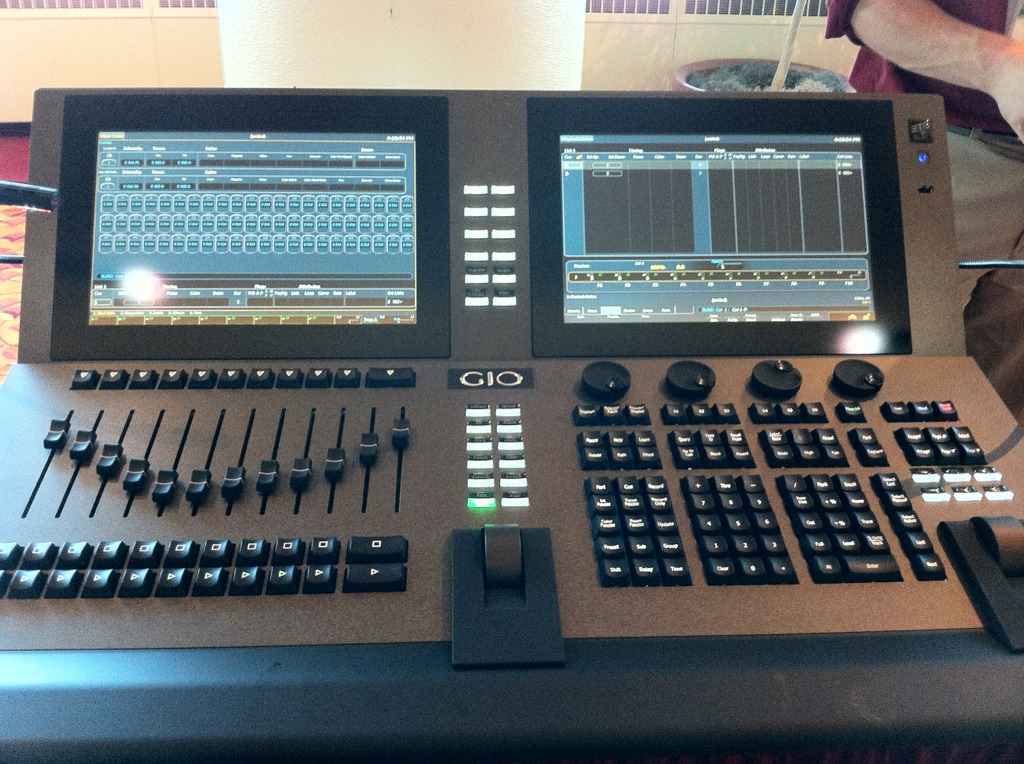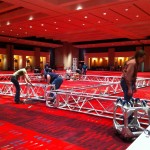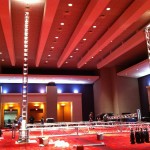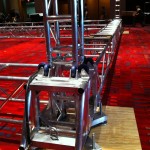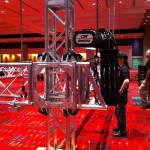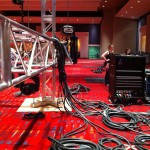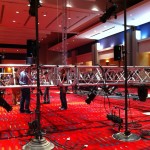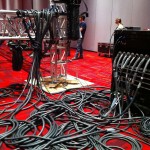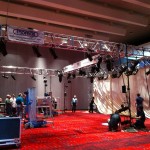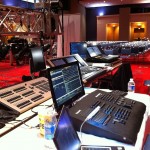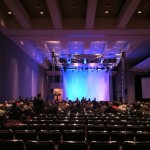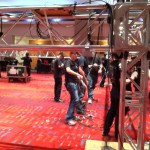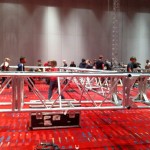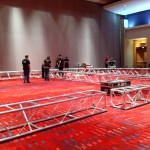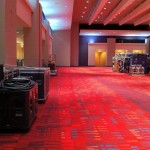Save The Date: Oct. 25 2017 – 7th Annual Touring Career Workshop

Are you new to the industry? Are you looking for advice and help on how to break into and maintain a healthy touring career? Looking to make contacts and new friends around the industry?
Chris Lisle’s Touring Career Workshop is the perfect event for you. On Wednesday, October 25, 2017 The Touring Career Workshop takes place from 5pm to 9pm at SoundCheck Nashville, TN. The main event and session begin at 6pm. The Touring Career Workshop is open to anyone and everyone. Cost… NADA… FREE!
Where:
SoundCheck Nashiville
This years sessions include:
- Getting the Gig
- Touring and Retirement Planning
- The Roadie Lifestyle
- Situational Awareness and Safety
- Touring 101
- Production Manager Panel
- Balance: Family and Relationships
- One on one with Joy Black, Adam Warren, Troy Von Haefen, RJ Stillwell
Registration for this year’s workshop will be open on Monday September 18.
Learn more about the Touring Career Workshop by visiting: touringcareerworkshop.com
eSET Skills Test Launched by USITT
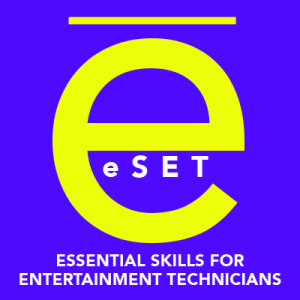 How important do you think it is to have knowledge and understanding of your professional career? How do you express your level of competence in your field to an employer? Sure, you did the college thing, aced your classes and received your degree. Now how about putting that learned knowledge to work. Or maybe you went the school-of-hard-knocks approach to the industry. You learn everything you know while on the job.
How important do you think it is to have knowledge and understanding of your professional career? How do you express your level of competence in your field to an employer? Sure, you did the college thing, aced your classes and received your degree. Now how about putting that learned knowledge to work. Or maybe you went the school-of-hard-knocks approach to the industry. You learn everything you know while on the job.
Any way you look at it, there needs to be a standard way of measuring ones knowledge of their profession against others or to meet a jobs specific requirements. USITT has announced the launch of their Essential Skills for Entertainment Technicians, or eSET.
More from USITT
This new proficiency program for entry-level technicians has launched its first online skills and safety tests in three disciplines — Lighting & Electrics, Rigging, and Costuming — as well as the basic Terms & Safety Test that’s a prerequisite to take any eSET exam.
In the coming years, USITT’s eSET Council will add exams in other disciplines including Audio, Scenery, Projection, and Wigs & Makeup. eSET offers a way for employers to test their technicians’ skills, and for technicians to show their skill sets.
With concern for safety, liability, and best practices taking center stage in the live events world, USITT has developed this unique tool to measure the preparedness of entry-level employees and volunteers who perform technical tasks.
USITT Executive Director David Grindle said the goal is to give employers confidence that someone with an eSET certificate has the basic skills and knowledge to perform a technical job – at a theatre, school, house of worship, or live entertainment facility.
“If two students come to you with degrees in theatre applying for a job as an electrician, how do you know what they know?” Director David Grindle asked. “With an eSET certificate, you know which candidate has a strong knowledge of the subject.”
eSET tests are written by groups of professionals who hire entry level employees, and are designed to test proficiency at that level. “eSET offers employers the same confidence in a worker at entry level as ETCP gives them on an advanced level,” Grindle said.
eSET comes in two parts. Part 1 is an online exam; Part 2 is a practical exam. Online exams in the first disciplines are live now at www.usitt.org/eset. The first practical exams will be held during USITT 2016 March 16-19 in Salt Lake City. Passing each part earns a certificate; those who pass both written and practical tests also earn an eSET pin.
“Potential employees can bring an employer a certificate stating they have passed only Part 1 of eSET, or Parts 1 and 2,” Grindle said. “Seeing an eSET certificate gives you greater confidence in the skill set of the potential employee.” Current employees are also eligible to take the exams, which cost only $40 for the first subject and are half-price for additional subjects.
eSET also offers a glossary of terms and a mobile app to help beginners learn over 2,000 terms used in entertainment technology. The app for iPhone and iPad can be found here. The android app is expected to go live on Feb. 1. Look for it, and more info about eSET, at www.usitt.org/eset.
HES Hosting Events in Vegas and San Fran During June
Wanna check out some of High End Systems latest gear and/or get some training? High End has announced two events happening this month. (Wow, we are in June already?!?) Here are the details from HES:
The activities begin June 12 & 13, 2012 with a Wholehog training session held at the ESP Vision headquarters in Las Vegas, Nevada. This introduction course covers the Wholehog Control Software, which is used on the Wholehog 3 Console, Road Hog, Road Hog Full Boar, the Hog iPC and Hog 3PC. Students will learn on Road Hog Full Boar consoles connected to ESP Vision. Full seminar description and registration information is available here.
The Wholehog training will be followed by an open house event to be held on June 14, 2012 at the Hard Rock Hotel and Casino, also in Las Vegas, Nevada. Products on display will include intellaspot, Technospot, TechnoArc, trackspot Bolt, DLV and Road Hog Full Boar consoles. Hands-on demonstrations from industry professionals allow attendees the opportunity to get up close and personal with all the technology. Full details on the Hard Rock Hotel & Casino event can be found here.
If you are attending InfoComm, which just HAPPENS to be during the same time. If you can find time to peal away from the show floor, try and swing by.
After the Las Vegas events, High End System will again present a Wholehog seminar and open house in San Francisco, California. The open house will be held on June 20, 2012 at the Ruby Skye. nightclub Products on display will again include intellaspot, Technospot, TechnoArc, trackspot Bolt, DLV and Road Hog Full Boar consoles. Customers will also have opportunities for hands-on demonstrations from industry professionals. Full details on the San Fran event can be found here.
Wholehog training will occur at the same location in San Francisco on June 19 and 20. The seminar will feature Road Hog Full Boar consoles connected to ESP Vision to allow for a complete training experience. Full seminar description and registration information is available here.
CSL’s Next Webinar: Green is a Number
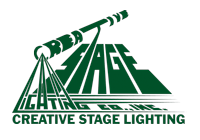 Creative Stage Lighting has announced their second webinar for 2012, Green is a number. The webinar is scheduled for Wednesday, May 9th at 4:30pm EST. How do you measure the environmental impact of a light fixture? There are many ways to look at it, starting with the light output compared to the energy input. But that’s just the beginning. Take a quick trip through the green valley of sustainable lighting including best practices for lessening the environmental impact of your lighting designs.
Creative Stage Lighting has announced their second webinar for 2012, Green is a number. The webinar is scheduled for Wednesday, May 9th at 4:30pm EST. How do you measure the environmental impact of a light fixture? There are many ways to look at it, starting with the light output compared to the energy input. But that’s just the beginning. Take a quick trip through the green valley of sustainable lighting including best practices for lessening the environmental impact of your lighting designs.
Points to be discussed include:
* Memory consoles changed the way shows were cued and lit.
* Automated lighting changed the way shows look.
* DMX512 changed the way consoles are run.
* LEDs changed the way shows are colored.
* Media servers changed the way video is controlled.
* Networking is changing the way shows are built.
* RDM will change the way shows are tech’d.
* Technology is changing everything in the live event production industry.
What’s coming in the future? New technology. Hang on for the ride of your light. You can learn more about the webinar by visiting Creative Stage Lighting’s blog and register for the webinar on GoToMeeting.
CSL Webinar: Emerging, Converging Technologies Is Online
Back on March 23rd, I joined Kevin Lorretto from Creative Stage Lighting on their first webinar of 2012, Emerging, Converging Technologies. After some time, travel and a little trade show in Long Beach… The webinar is up on YouTube thanks to CSL. CSL has an entire line up of webinars planned for 2012. When more are announced, we’ll let you know. Thanks CSl for having me on!
USITT 2012: Session on Creating a Digital Presence
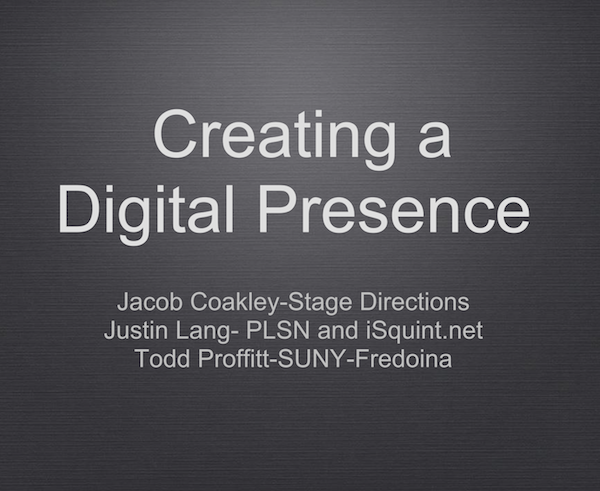
Is anyone else excited that USITT happens later this week?!? USITT has to be one of my favorite shows. Why, it’s all about education and students! USITT is the perfect place to get a good look at what is going on in the industry and get a bit of education while you’re at it. All throughout USITT, there are sessions ranging from almost every aspect of the industry. Best of all… THEY ARE FREE!
On Thursday morning at 9:30am, I’ll be joining Todd Proffitt from SUNY Fredonia and Stage Directions Editor, Jacob Coakley. We’ll be talking about creating a digital presence. The session is all about how to market yourself online and digitally. We will talk about how to setup and display your work on a variety of different sites as well as a mobile version of your work.
It always happens, you’re out, at the local watering hole and run into someone that might be interested in your work. Will you have your book or portfolio? I don’t think so, but you will have your mobile phone. We’ll explore options on how to organize, maintain and having your work ready at any moment.
Make sure to join in on the session. If you can’t make it, we’ll have the materials up online after the session.
Vectorworks Releases Entertainment and Lighting Design with Vectorworks Spotlight, First Edition
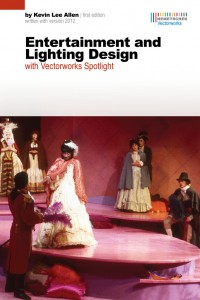 Perfect timing! If you are a student looking to enter the 2012 Student Lighting Design Competition, Kevin Lee Allen’s new book, Entertainment and Lighting Design with Vectorworks Spotlight, First Edition might just be what you are looking for! Not only in Kevin Lee Allen one of our judges for the SLDC, he is also an award-winning lighting and scenic designer whose work includes theatre, film, TV, museums and corporate environments.
Perfect timing! If you are a student looking to enter the 2012 Student Lighting Design Competition, Kevin Lee Allen’s new book, Entertainment and Lighting Design with Vectorworks Spotlight, First Edition might just be what you are looking for! Not only in Kevin Lee Allen one of our judges for the SLDC, he is also an award-winning lighting and scenic designer whose work includes theatre, film, TV, museums and corporate environments.
More from the press release:
This book explores the use of the Vectorworks Spotlight with Renderworks® program for use in the entertainment industries. While the methods and techniques described are applicable to film, television, concerts, exhibits, and themed architecture or interiors, this tutorial focuses on a project that creates lights and a set for the stage, the root of entertainment design.
From one step beyond traditional pencil thumbnails, this guide outlines a process of design development and collaboration with other designers and technical staff. The text is tutorial-based and directs the user to create two projects, each supported by a series of simple exercises. The first project is the creation of a simple 3D form, and the second project entails the creation of a scenic and lighting design for a theoretical production of Romeo and Juliet.
This book is written for professional designers as well as designers in education (students, instructors, schools). It is intended for use with Vectorworks 2012 software and is most applicable for Vectorworks Spotlight and Designer users. It is a part of Nemetschek Vectorworks’ self-paced training options, designed for people who like to learn on their own and at their own pace. For more information and to purchase these tutorials, please visit www.vectorworks.net/training/guides.
The tutorial will also be part of the prize package for the iSquint.net and Stage Directions Student Lighting Design Competition (SLDC), sponsored by Nemetschek Vectorworks, City Theatrical and Field Template. Allen serves on the competition’s panel of judges. Entries are due March 16, 2012, and the winner will be announced at the USITT Conference on March 29. For more information and to view the complete rules.
ETCP Offers Exams at USITT 2012 in Long Beach
The ETCP examinations will be given at USITT’s Annual Conference & Stage Expo in Long Beach, CA. All three examinations will be given at the same time and are scheduled for the morning of Saturday, March 31. Candidates who wish to take more than one exam should contact ETCP. Interested applicants must submit their application, along with supporting materials and fee, to the ETCP office no later than March 1, 2012. Space is limited, so submit your application today!
Candidate information, including eligibility requirements and applications, is available on the ETCP website (etcp.plasa.org), or if you would like the information mailed, please contact Meredith Moseley-Bennett, ETCP Certification Manager, at 212-244-1505 or etcp@plasa.org.
Can’t make it to USITT? ETCP examinations are given daily at over 190 computer based testing centers across the U.S. and Canada. After an application has been received and accepted, candidates will be sent information on how to schedule an examination at a site, date, and time that is most convenient for them.
Having ETCP Certified Technicians on your staff is a reassurance of your employees’ competency, experience and ethical behavior. Make safety a priority by getting your employees ETCP Certified!
Mark Your Calendars: Stage Seminars Super Saturday is January 21st in NYC
 Stage Seminars Stage Lighting Super Saturday returns to New York City on Saturday, January 21st. Are you going to be there?If you are in the city that weekend, it would be a good idea to head to the upper west side and check out some new products and maybe learn a thing or two. Here is more about Super Saturday:
Stage Seminars Stage Lighting Super Saturday returns to New York City on Saturday, January 21st. Are you going to be there?If you are in the city that weekend, it would be a good idea to head to the upper west side and check out some new products and maybe learn a thing or two. Here is more about Super Saturday:
A dozen theater lighting professionals will speak and about 20 industry lighting manufacturers will on hand and have technical personnel and equipment to demonstrate. The tentative program includes inspiration, fixtures, color, consoles, moving lights, trouble shooting, CAD, Virtual Magic Sheet & LightWright, paperwork, and other subjects. Starting at 8:00 am on Saturday, January 22, 2011, the sixth-annual Stage Lighting Super Saturday all-day seminar will take place at the conveniently located Fiorello H. LaGuardia High School of Music & Art and Performing Arts in New York City located across from New York City’s Lincoln Center.
Sounds like fun right? You’ll find me there! I am so excited, this is my second year going! You should be too. On top of a day of lighting glory and education, the organizers of Super Saturday have a special offer for you. Scott Parker offered a discount code to the readers of iSquint to attend and save on Super Saturday. Use the code and save $25 off the registration price… Now, you can save $50 if you register before January 7th! It’s easy, use the code iSquintVIP when you register. What are you waiting for?! Go register for Super Saturday now! I can’t wait to see you there!
You can learn more about Super Saturday by visiting www.stageseminars.com.
Stage Lighting Super Saturday Returns to NYC for 2011
Sonny Sonnenfeld and Scott C. Parker announce that Stage Lighting Super Saturday selects New York City for its seventh annual seminar.
At 8:00 am on Saturday, January 21, 2012, the seventh-annual Stage Lighting Super Saturday all-day seminar will take place at the conveniently located Fiorello H. LaGuardia High School of Music & Art and Performing Arts in New York City near Lincoln Center on Amsterdam Avenue and West 65th Street.
Once again, this popular annual seminar is designed for everyone involved in stage, architectural, or entertainment lighting. The sessions are not too basic nor too advanced. Everyone who attends will benefit. The intense all day seminar will be led by theatre lighting professionals leading sessions about inspiration, training, product, and just doing it.
Approximately 20 manufacturers and technical specialists will demonstrate equipment. Previous years’ supporters included Altman, GAM, Martin Pro, Lee, SeaChanger, Strand and more. Broadway lighting designer Ken Billington will present an inspirational session on the “Art of Stage Lighting.” Broadway lighting designer Richard Pilbrow will present a session discussing Virtual Lighting Control using various tools including the iPad.
For more information, please visit www.stageseminars.com or contact Scott Parker at super2012@stageseminars.com, 1-866-832-4390.
ETC Cue: Recap Part 1
 Last week, around 180+ folks attended the inaugural ETC end users conference known as ETC Cue. It was overheard that it was about 2 years in the making, and the preparation certainly showed.
Last week, around 180+ folks attended the inaugural ETC end users conference known as ETC Cue. It was overheard that it was about 2 years in the making, and the preparation certainly showed.
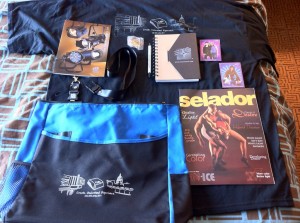 Upon arriving, conference goers were given their schedule (the registration process required us to choose which sessions we were initially interested in, although Tuesday and Wednesday sessions were considered “open” but more on that later) as well as an awesome, and quite useful, goodie bag containing a T-Shirt, pen and notepad, ETC pin, Selador newsletter, presenter trading cards, fixture line literature, and of course the bag itself. The coolest is the nametag and lanyard: the lanyard itself is a USB flash drive, which contained the powerpoint presentations of the whole conference, plus practice workbooks for the consoles! As an educator, this part caused a fair bit of giddiness.
Upon arriving, conference goers were given their schedule (the registration process required us to choose which sessions we were initially interested in, although Tuesday and Wednesday sessions were considered “open” but more on that later) as well as an awesome, and quite useful, goodie bag containing a T-Shirt, pen and notepad, ETC pin, Selador newsletter, presenter trading cards, fixture line literature, and of course the bag itself. The coolest is the nametag and lanyard: the lanyard itself is a USB flash drive, which contained the powerpoint presentations of the whole conference, plus practice workbooks for the consoles! As an educator, this part caused a fair bit of giddiness.
The first official day was Monday July 25th, which was a pre-conference day (beginning with breakfast) where attendees could choose to register for a console-programming class (with their initial registration) or take a detailed factory tour, followed by an evening welcoming reception.
This attendee chose the console-programming route and was lucky to be placed in a class led by Anne Valentino, Nick Gonsman, and Peter Weigand for advanced programming. The first surprise of the conference was in these programming classes, where we learned that we in the Eos Family were to be training on software version 1.9.8, which is currently in closed beta and suggested to be released in the 4th quarter, near September.
For those curious on the topics discussed, our class created a list of items we wanted to know more about. We covered: the changes that are coming in the software (including a new “shift” key to facilitate new commands, startup and shutdown macros, and the ability to dim the console’s LED Littlelites). We focused on terminology and process: learning about background space vs. foreground space, workflow (referenced vs. absolute data), locking palettes, how the console “sees” the differences between Record and Record Only, Selective Storing, Filters, Null Data, Shielded Subs, Block and Assert, tips on marking, working with multiple cue lists, working with Query, working with Trace, Sub mapping, timing on Subs, and altering time by percentage. By 4 pm we were armed with pages of notes and pleasantly saturated brains.
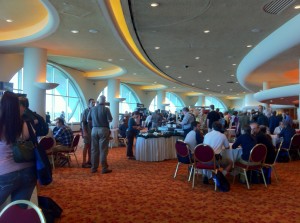
 The welcome reception gave us a chance to decompress and network with old and new friends over a passel of appetizers (and the mashed potato martinis deserve a mention). Most of the reception was a blur however once the Gio consoles were rolled into the room. Everyone crowded hungrily around the three consoles; eager to hear everything the ETC representatives could tell us about them.
The welcome reception gave us a chance to decompress and network with old and new friends over a passel of appetizers (and the mashed potato martinis deserve a mention). Most of the reception was a blur however once the Gio consoles were rolled into the room. Everyone crowded hungrily around the three consoles; eager to hear everything the ETC representatives could tell us about them.
As highlighted earlier, this desk is intended to fit between the Ion and the Eos, literally and figuratively, as the physical size indicates as well as the output/address configurations. It will support the same protocols (Net 2 and Net 3, as well as DMX) as their other consoles, and can support up to 3 additional external monitors (DVI, or VGA with an adaptor). The soft keys and other control buttons lie in between the fader area and the keyboard area, and their corresponding labels are also backlit. There are 8 non-labeled soft keys that are placed between the touch screens; presumably these are additional multi-functional soft keys and/or user definable macro keys. The keys at the top of the faders are the load keys, and the faders are motorized. The keys below are the same Stop/Back and Go buttons, but are marked with the universal square symbol for Stop (backlit in red) and triangle “play” (backlit in green). All of the console keys are backlit, are user configurable as far as brightness, and will dim out after a set amount of time. The encoder wheels on this console are above the control keypad area, and utilize the right hand touch screen for their page navigation. There are no slots for button modules, as in the Eos console. The internal screens appear smaller than the 15” screens of the Eos, but it fits well with the form factor (and appear to be a higher resolution). 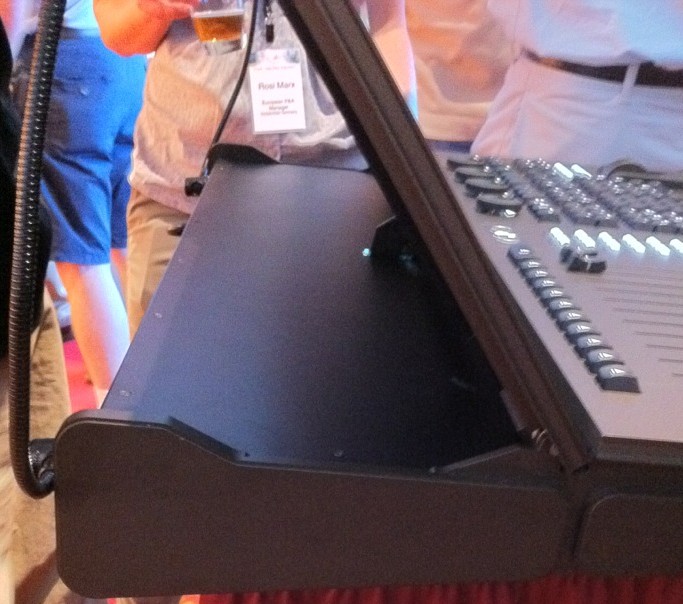 The repositionable screens are a highlight; they are super thin, hinge at the bottom of the screens (the pivot can be seen behind the screens at the center bottom on the image to the right) and the folding action operates with one hand via a button at the top in the middle and allows the screens to fold down at any position from up to completely flat. The coating on the metal is so scratch resistant, that when one of the reps took a quarter and scrubbed it over the fascia, it wiped clean. More information will be forthcoming soon, as we heard that it is slated to be in the area reps hands in September.
The repositionable screens are a highlight; they are super thin, hinge at the bottom of the screens (the pivot can be seen behind the screens at the center bottom on the image to the right) and the folding action operates with one hand via a button at the top in the middle and allows the screens to fold down at any position from up to completely flat. The coating on the metal is so scratch resistant, that when one of the reps took a quarter and scrubbed it over the fascia, it wiped clean. More information will be forthcoming soon, as we heard that it is slated to be in the area reps hands in September.
What a great end to the first day of the first ETC Cue conference! The recap of day 2 will come in ETC Cue: Recap part 2.
USITT 2011 Recap: Reflections from the Light Lab
It is hard to believe how quickly time flies. Two months ago many folks were returning and recuperating from another successful USITT conference in North Carolina. Every other year the Lighting Commission hosts a “light lab” and the 2011 lab was certainly a highlight; as six of the commissions sessions were held there in Ballroom A/B.
What is the light lab? It is many things: a space where sessions are presented; a place for students, educators and professionals to mingle and network; and a neutral ground for anyone who wishes to learn about equipment they do not know about or perhaps to share their experiences, tips and tricks to those who are curious about the lab and its components.
This year, there were many great sessions presented in the lighting lab, beginning with “troubleshooting the lighting rig.” After a full day of loading in, patching, and troubleshooting to get the rig working, presenters “broke” portions of the system for volunteers to put into practice the topics and steps discussed. “LED’s in the Light Lab” introduced a number of the latest fixtures to a packed house: over 300 attendees! Examples of various color temperatures of “white” light, color mixing, color saturation, and remote focus-ability were highlights of this session. Day 2 brought “Lighting Projects for the Classroom” which focused on activities within a light lab, while also acting as a “call for submissions” for the forthcoming update to the 1992 USITT publication “Practical Projects for Teaching Lighting Design – A Compendium.” Submissions are being collected at this time, and a juried selection is slated to take place later this year. (Questions regarding submitting a project can be directed through the USITT Lighting Commission Page later this summer.) Rounding out day 2’s activities in the lab was “Lighting Make-up, Costumes & Multi-Ethnic Casts” giving lovely visual examples of how lighting enhances, or deters from, the form. The last day in the light lab began with a cross-commission session, “Health & Safety: Rigging Safety for Ground Support Truss” which utilized the structure of the rig to its full extent and was a good reminder to all of the safety checks and practices to be performed when working with ground supported truss. Closing the light lab sessions was the “Using Color in Lighting” presentation by Mr. Mark Stanley; a great refresher for the experienced and valuable information and questions for the novices.
Light Lab demystified:
One of the things I hear most often in the light lab is: this is great! Why is there not a light lab next year? The light lab takes a lot of planning, time, money, energy, and volunteers to put together. Sessions are proposed and chosen during the conference a year, or sometimes two or more, in advance. Members of the light lab committee and national committee are charged with various tasks from: chairing the lab in its entirety, sourcing and securing equipment, sourcing and securing a site and style of lab (flown truss, ground support truss, theatrical venue, etc), drafting the lab plot, serving as master electrician for the lab, coordinating student volunteers (those volunteers who are current students and who work the conference for their registration), coordinating adult volunteers (the rest of the volunteers), coordinating sound and video needs, coordinating and consulting on rigging, coordinating signage, consulting on technology, on-site coordinating, and a venue liaison, among many other roles that must take place to generate the lab.
Tips for getting involved:
Every year, whether it is a light lab year or a non-lab year, the commission holds meetings where the commissioners and light lab committee members are present. Talking to one of them directly at any time during the conference and expressing interest is a great way to start; if individual interest becomes peaked after the conference is over however, a direct email contact can be made through the USITT contact sheet or generally through the vice commissioner of communication, who will pass along the information to the appropriate coordinator or commissioner.
The light lab is organic from year to year, some years require more from volunteers than others yet those who give graciously gain much in the end, if they choose to partake of it. This year many were able to see (some for the first time) a self-climbing truss system graciously loaned to the lab by Thomas Truss. For those in education, or in places with limited budgets, having the opportunity to have some hands-on time with four separate consoles all actively on the network at once was something to remember. Having the opportunity to learn from, or just observe master programmers such as Bobby Harrell at the Strand VL 16 desk or Hideaki Tsutsui at the GrandMA, or listening in as ETC’s Tracy Fitch discussed the intricacies of having all four consoles online at once via streaming ACN was a particularly nice treat.
If you missed it this year, consider it for USITT 2013. It is a great place to learn, to grow and to give back.
***************************
Images from the 2011 USITT Lighting Lab:
***************************
Some of the donors and their equipment seen in the 2011 USITT Lighting Lab:
AC Lighting
- Chroma Q Scrollers
- Strand VL 16 Console
- Chroma Q Color Force
- DMX & Scroller Power
ACT Lighting
- Grand MA 2 Lite
- Clay Packy Alpha Spot 700’s
Phillips Entertainment & Vincent Lighting
- VL 2500 Spots
Apollo
- Smart Color Pro Scrollers
- Smart Move Gobo Rotators
- Scroller and DMX Cable
- Gel Package
West Virginia University
- Tool Box
- Cable
- Fleenor Splitter
- Booms
- 18” Side Arm
- Gel Cutter
Altman
- Fresnels
- 3-Cel Far Cycs
Syracuse Scenery & Stage Lighting
- Custom made Cyc
Barbizon
- Connectors
Rosco
- Gel Package for Mark Stanley
Catawba College
- Pipe for Cyc
SUNY Fredonia
- Truss Protectors
ETC
- Dimmer Rack
- Fixtures
- EOS Console
- Element Console
- LED Fixtures
- Cable
Thomas Truss
- Custom Built Rig
LatestHeadlines
- Upgrading Your Toolbox: City Theatrical DMXcat-E and DMXcat Multi Function Test Tool
- Claypaky Bringing Back the Sexy to Par Cans with the Midi-B FX
- Ayrton Evolves the Cobra, the Cobra2 Developed for the US Market
- MA Lighting Intros grandMA3 onPC Fader Wing and DIN-Rail Nodes
- Live Events LEVL Up Fest: A Festival to Aid our Industry
